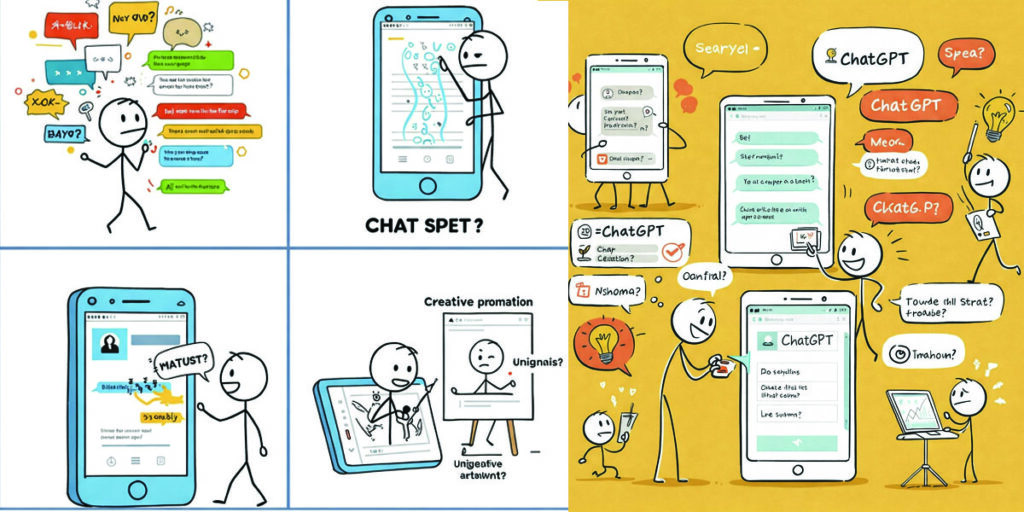Jasper, formerly known as Jarvis, has rapidly emerged as a prominent player in the burgeoning field of Artificial Intelligence (AI) writing assistants. This comprehensive article delves into the history of Jasper, tracing its evolution and key milestones. Furthermore, it will analyze the economic market surrounding AI writing tools, examining Jasper’s position, competitive landscape, and impact on content creation industries. Finally, it will explore the networking aspects associated with Jasper, including its integrations, community, and influence within the broader tech ecosystem.
Part 1: A Historical Journey of Jasper
The genesis of Jasper can be traced back to the increasing advancements in Natural Language Processing (NLP) and the development of sophisticated language models. While the exact origins lie within the proprietary work of its creators at UseProof (now Jasper AI), understanding the broader technological context is crucial. The late 2010s witnessed significant breakthroughs in transformer architectures, exemplified by OpenAI’s GPT (Generative Pre-trained Transformer) series. These models demonstrated an unprecedented ability to understand and generate human-like text, laying the foundation for AI writing assistants.
Early Influences and the Rise of GPT:
The development of Jasper was undoubtedly influenced by the capabilities showcased by early iterations of GPT. These models, trained on massive datasets of text and code, could perform various language tasks, including text generation, translation, and question answering. The potential for leveraging such technology to automate and enhance writing processes became increasingly apparent.
The Birth of Jarvis (and UseProof):
The company behind Jasper, initially known as UseProof, had a background in marketing and conversion optimization tools. Recognizing the growing need for efficient content creation, they embarked on developing an AI-powered writing assistant. The initial iteration, named Jarvis, was built upon the foundational language models, primarily GPT-2 and later GPT-3, licensed from OpenAI.
Key Milestones and Feature Development:
The journey of Jasper has been marked by continuous development and the introduction of a wide array of features designed to cater to various writing needs:
- Early Stages and Core Functionality: The initial versions of Jarvis focused on generating short-form marketing copy, such as ad headlines, social media posts, and product descriptions. Users could input basic information about their product or service, and Jarvis would generate multiple variations of compelling text.
- Long-Form Content Generation: A significant milestone was the expansion of Jarvis’s capabilities to handle long-form content, including blog posts, articles, and even books. This involved developing sophisticated prompting techniques and allowing users more control over the AI’s output through features like “Long-Form Assistant.”
- Template Library: To streamline the content creation process for specific use cases, Jasper introduced a vast library of templates. These templates are pre-designed for various content types, such as email marketing campaigns, website copy, video scripts, and SEO meta descriptions. Users can simply fill in the relevant details, and Jasper generates tailored content.
- Tone of Voice Customization: Recognizing the importance of brand identity, Jasper implemented features allowing users to define and customize the tone of voice of the generated content. This ensures that the AI’s output aligns with the brand’s personality and resonates with the target audience.
- Integration with External Tools: To enhance workflow efficiency, Jasper integrated with popular marketing and content management platforms, such as Surfer SEO for SEO optimization and Google Docs for seamless editing and collaboration.
- The Name Change to Jasper: In 2022, Jarvis underwent a rebranding and was renamed Jasper. This change was reportedly due to a conflict with the fictional AI assistant J.A.R.V.I.S. in the Marvel Cinematic Universe. The rebranding marked a new chapter for the platform, emphasizing its continued growth and evolution.
- Jasper Art and Visual Content: Expanding beyond text generation, Jasper introduced Jasper Art, an AI image generation tool. This allowed users to create unique visuals to accompany their written content, further streamlining the content creation process.
- Continued Model Upgrades: Jasper has consistently leveraged advancements in underlying language models, ensuring that users benefit from the latest improvements in text generation quality, coherence, and accuracy. This includes incorporating fine-tuned models optimized for specific writing tasks.
- Collaboration and Team Features: Recognizing the collaborative nature of content creation, Jasper introduced features that allow teams to work together on projects, manage users, and maintain brand consistency across multiple writers.
The Evolution of User Interaction:
The way users interact with Jasper has also evolved significantly. Early interactions were primarily text-based prompts. However, the platform has become more intuitive, with guided workflows, template interfaces, and more sophisticated editing capabilities within the platform itself.
Part 2: The Economic Market of AI Writing Assistants
The emergence of AI writing assistants like Jasper has created a dynamic and rapidly expanding economic market. Several factors contribute to this growth:
- Increasing Demand for Content: The digital age has fueled an unprecedented demand for content across various platforms, including websites, social media, marketing campaigns, and e-commerce. Businesses and individuals alike need a constant stream of high-quality content to engage their audiences and achieve their goals.
- Time and Resource Constraints: Creating compelling content can be time-consuming and resource-intensive. AI writing assistants offer a solution by automating significant portions of the writing process, freeing up human writers to focus on strategy, creativity, and editing.
- Scalability and Efficiency: AI tools can generate content at scale, allowing businesses to produce a large volume of text quickly and efficiently. This is particularly valuable for tasks like generating product descriptions or social media updates.
- Cost-Effectiveness: While subscription fees for AI writing assistants exist, they can often be more cost-effective than hiring additional writers or outsourcing content creation entirely, especially for businesses with consistent content needs.
- Improved Content Quality and Consistency: AI can help ensure consistency in tone, style, and messaging across different pieces of content. Furthermore, with proper prompting and editing, AI-generated content can achieve a high level of quality.
Jasper’s Position in the Market:
Jasper has established itself as a leading player in this competitive market. Its strengths include:
- Strong Brand Recognition: The platform has built a significant brand presence through effective marketing and a large user base.
- Comprehensive Feature Set: Jasper offers a wide range of features catering to diverse writing needs, from short-form marketing copy to long-form articles and even image generation.
- User-Friendly Interface: The platform is generally considered user-friendly, making it accessible to individuals with varying levels of technical expertise.
- Active Community and Support: Jasper boasts a vibrant online community and provides robust customer support, fostering user engagement and satisfaction.
- Integration Ecosystem: Its integrations with other popular tools enhance its utility and streamline workflows for users.
Competitive Landscape:
The AI writing assistant market is becoming increasingly crowded, with several notable competitors, including:
- OpenAI’s ChatGPT: While primarily a conversational AI, ChatGPT’s powerful language generation capabilities make it a strong competitor in content creation. Its accessibility and free tier have also contributed to its widespread adoption.
- Copy.ai: Another established player offering a range of AI writing tools and templates.
- Rytr: Known for its affordability and ease of use, Rytr caters to individuals and smaller businesses.
- Surfer AI: Focuses on SEO-optimized content generation, directly competing with Jasper’s Surfer SEO integration.
- Wordtune: Emphasizes rewriting and editing existing content, offering a different approach to AI writing assistance.
Impact on Content Creation Industries:
The rise of AI writing assistants like Jasper is having a significant impact on various content creation industries:
- Marketing and Advertising: AI is being used to generate ad copy, social media posts, email marketing campaigns, and website content, improving efficiency and potentially increasing conversion rates.
- Blogging and Journalism: While not entirely replacing human writers, AI can assist with research, outlining, and drafting articles, freeing up journalists and bloggers to focus on in-depth reporting and analysis.
- E-commerce: AI can generate product descriptions, customer reviews summaries, and marketing materials for online stores, enhancing the shopping experience and driving sales.
- Technical Writing: AI can assist in creating documentation, manuals, and technical specifications, ensuring accuracy and consistency.
- Academic Writing: While ethical considerations are paramount, AI tools can potentially assist with literature reviews, summarizing research papers, and brainstorming ideas.
Economic Models and Pricing:
Jasper typically operates on a subscription-based model, offering different tiers with varying features and usage limits. This recurring revenue model allows the company to invest in further development and support. The pricing strategies often depend on the number of words generated, the features accessed, and the number of users.
Challenges and Opportunities:
The economic market for AI writing assistants faces both challenges and opportunities:
- Maintaining Differentiation: As more players enter the market, differentiation through unique features, superior quality, and niche focus will be crucial.
- Addressing Accuracy and Bias: Ensuring the accuracy and avoiding bias in AI-generated content remains a significant challenge. Robust fact-checking and human oversight are essential.
- Evolving Language Models: The rapid evolution of underlying language models requires continuous adaptation and integration of the latest advancements.
- Ethical Considerations: Issues related to plagiarism, copyright, and the potential displacement of human writers need careful consideration and ethical guidelines.
- Expanding Use Cases: Opportunities lie in exploring new applications of AI writing assistants across various industries and developing more specialized tools.
- Integration with Emerging Technologies: Combining AI writing with other technologies like voice assistants and augmented reality could unlock new possibilities for content creation and delivery.
Part 3: Networking and Ecosystem of Jasper
The success and influence of Jasper extend beyond its core writing capabilities to its networking within the broader tech ecosystem. This includes its integrations, community, and strategic partnerships.
Integrations with Other Platforms:
Jasper’s strategic integrations with other popular tools significantly enhance its functionality and user workflow:
- SEO Tools (e.g., Surfer SEO): Integration with SEO platforms allows users to generate content optimized for search engines, incorporating keyword research and competitive analysis directly into the writing process.
- Content Management Systems (CMS) (e.g., WordPress): Direct integration with CMS platforms streamlines the process of publishing AI-generated content to websites and blogs.
- Grammar and Style Checkers (e.g., Grammarly): While Jasper has its own editing capabilities, integration with dedicated grammar and style checkers provides an additional layer of quality assurance.
- Marketing Automation Platforms: Integration with marketing automation tools allows for the seamless incorporation of AI-generated content into email campaigns and other marketing workflows.
- Collaboration Tools (e.g., Google Docs): Integration with collaborative platforms facilitates teamwork and allows multiple users to work on AI-generated content simultaneously.
- Image Generation Platforms (e.g., Jasper Art): The in-house development and integration of Jasper Art provide a unified platform for both text and visual content creation.
The Jasper Community:
A strong and active user community plays a vital role in the growth and development of Jasper. This community provides several benefits:
- Peer Support and Knowledge Sharing: Users can connect with each other, share tips and best practices for using Jasper effectively, and troubleshoot issues.
- Feedback and Feature Requests: The community provides valuable feedback to the Jasper team, influencing the platform’s development roadmap and the introduction of new features.
- Use Case Inspiration: Users share innovative ways they are leveraging Jasper for various content creation tasks, inspiring others and expanding the perceived possibilities of the tool.
- Sense of Belonging: The community fosters a sense of belonging among users, creating a supportive environment for learning and growth.
Jasper actively cultivates its community through:
- Online Forums and Groups: Dedicated online spaces where users can interact, ask questions, and share their experiences.
- Webinars and Training Sessions: Educational resources provided by Jasper to help users maximize the platform’s potential.
- Case Studies and Success Stories: Showcasing how other users are achieving results with Jasper to inspire and demonstrate its value.
- Social Media Engagement: Active presence on social media platforms to connect with users, share updates, and foster discussions.
Influence within the Tech Ecosystem:
Jasper’s rise has contributed to the broader awareness and adoption of AI in content creation. Its success has also influenced other companies to explore and invest in similar technologies. Furthermore, Jasper’s reliance on and partnership with companies like OpenAI highlights the interconnectedness within the AI research and development ecosystem.
Partnerships and Collaborations:
While specific partnership details may be proprietary, it’s evident that Jasper collaborates with various technology providers to enhance its platform and reach a wider audience. These collaborations could include:
- Language Model Providers (e.g., OpenAI): Access to and integration of advanced language models are fundamental to Jasper’s capabilities.
- Software Integrations: Partnerships with other software companies enable seamless workflows for users.
- Marketing and Sales Channels: Collaborations with marketing agencies or other businesses could expand Jasper’s reach and user base.
The Future of Jasper and AI Writing Assistants:
The future of Jasper and the AI writing assistant market is likely to be characterized by continued innovation and integration. Key trends to watch include:
- More Sophisticated Language Models: Advancements in AI will lead to even more powerful and nuanced language models capable of generating higher-quality and more creative content.
- Increased Personalization: AI writing assistants may become more adept at understanding individual user preferences and brand voices, generating highly personalized content.
- Multimodal Content Generation: The ability to seamlessly generate text, images, audio, and video from a single platform will become increasingly important.
- Deeper Industry-Specific Applications: AI writing tools tailored to the specific needs and terminology of various industries will emerge.
- Enhanced Collaboration Features: AI will play a greater role in facilitating collaboration among human writers, providing real-time suggestions and assistance.
- Ethical Considerations and Regulations: As AI writing becomes more prevalent, discussions and potential regulations around ethical use, copyright, and transparency will intensify.
Jasper’s journey from its early iterations as Jarvis to a leading AI writing assistant is a testament to the rapid advancements in NLP and the growing demand for efficient content creation solutions. Its history is marked by continuous feature development and adaptation to user needs. Economically, Jasper operates within a dynamic and competitive market, where its comprehensive feature set, strong brand, and active community have contributed to its success. Its networking through integrations and community engagement further solidifies its position within the broader tech ecosystem. As AI technology continues to evolve, Jasper is poised to play a significant role in shaping the future of content creation, offering both immense opportunities and important considerations for individuals and businesses alike. The ongoing development and integration of more sophisticated AI models will undoubtedly unlock even greater potential for Jasper and the entire field of AI writing assistance.




















